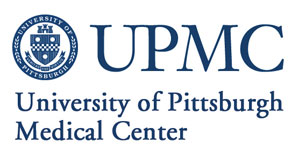Expanded Access IND Administration of HBOC-201 in Patients With Severe Acute Anemia
| Status: | Available |
|---|---|
| Conditions: | Anemia |
| Therapuetic Areas: | Hematology |
| Healthy: | No |
| Age Range: | 18 - 80 |
| Updated: | 8/18/2018 |
| Contact: | Amy Monroe |
| Email: | monroeal@upmc.edu |
| Phone: | 412-609-6161 |
An Expanded IND Access Investigation of HBOC-201 Infusion in Patients With Severe Acute Anemia Who Are Unable to Receive Red Blood Cell Transfusion
HBOC-201 provides an oxygen treatment bridge and can be used to eliminate, delay, or reduce
the need for red blood cell transfusions in anemic patients
This is an expanded access IND protocol, and will provide treatment with HBOC-201 to severely
anemic adults for whom blood is not an option
the need for red blood cell transfusions in anemic patients
This is an expanded access IND protocol, and will provide treatment with HBOC-201 to severely
anemic adults for whom blood is not an option
HBOC 201 [hemoglobin glutamer - 250 (bovine)] is an investigational agent, manufactured by
Hemoglobin Oxygen Therapeutics LLC (HbO2 Therapeutics), located in Souderton, PA. HBOC-201,
has been previously studied17-20 as an alternative to blood transfusions in severely anemic
patients needing a way to enhance tissue oxygenation. HBOC-201 is purified, cross-linked and
polymerized acellular bovine hemoglobin (Hb) in a modified lactated Ringer's solution, and
does not require blood compatibility.
HBOC-201 is an oxygen carrying fluid that increases plasma and total hemoglobin
concentration. HBOC-201 has a right-shifted oxygen binding equilibrium curve with a P50 of 40
± 6 mmHg compared to 27 mmHg for corpuscular hemoglobin. When fully saturated, HBOC-201 binds
approximately 1.39 mL of oxygen per gram hemoglobin and, therefore, has the same oxygen
carrying capacity as whole blood having the same hemoglobin concentration. To the extent that
HBOC-201 administration increases the total hemoglobin concentration in circulation, HBOC-201
is capable of increasing convective oxygen delivery (DO2), defined as the product of blood
oxygen content (ml O2/ml blood) and volumetric blood flow (ml blood/min.) At concentrations
corresponding to at least 10% of the total hemoglobin concentration, HBOC-201 also
facilitates diffusive oxygen delivery, primarily by shortening diffusion distances between
RBCs and between RBCs and the endothelium. The higher P50 of HBOC-201 compared to that of
cellular hemoglobin further facilitates diffusion of oxygen from RBCs to tissues through
increased oxygen off-loading.
HBOC-201 provides an oxygen treatment bridge and can be used to eliminate, delay, or reduce
the need for red blood cell transfusions in anemic patients
This is an expanded access IND protocol, and will provide treatment with HBOC-201 to severely
anemic adults for whom blood is not an option.
Hemoglobin Oxygen Therapeutics LLC (HbO2 Therapeutics), located in Souderton, PA. HBOC-201,
has been previously studied17-20 as an alternative to blood transfusions in severely anemic
patients needing a way to enhance tissue oxygenation. HBOC-201 is purified, cross-linked and
polymerized acellular bovine hemoglobin (Hb) in a modified lactated Ringer's solution, and
does not require blood compatibility.
HBOC-201 is an oxygen carrying fluid that increases plasma and total hemoglobin
concentration. HBOC-201 has a right-shifted oxygen binding equilibrium curve with a P50 of 40
± 6 mmHg compared to 27 mmHg for corpuscular hemoglobin. When fully saturated, HBOC-201 binds
approximately 1.39 mL of oxygen per gram hemoglobin and, therefore, has the same oxygen
carrying capacity as whole blood having the same hemoglobin concentration. To the extent that
HBOC-201 administration increases the total hemoglobin concentration in circulation, HBOC-201
is capable of increasing convective oxygen delivery (DO2), defined as the product of blood
oxygen content (ml O2/ml blood) and volumetric blood flow (ml blood/min.) At concentrations
corresponding to at least 10% of the total hemoglobin concentration, HBOC-201 also
facilitates diffusive oxygen delivery, primarily by shortening diffusion distances between
RBCs and between RBCs and the endothelium. The higher P50 of HBOC-201 compared to that of
cellular hemoglobin further facilitates diffusion of oxygen from RBCs to tissues through
increased oxygen off-loading.
HBOC-201 provides an oxygen treatment bridge and can be used to eliminate, delay, or reduce
the need for red blood cell transfusions in anemic patients
This is an expanded access IND protocol, and will provide treatment with HBOC-201 to severely
anemic adults for whom blood is not an option.
Inclusion Criteria:
1. Patients ≥ 18 years of age
2. Critically ill patients with hemoglobin ≤ 6 g/dL (or 7-8 g/dL with significant active
bleeding), and physiologic evidence of critical ischemia, for example: elevated
troponins, altered mental status, acute renal failure, lactic acidosis or evidence of
central nervous system acute deficits
3. Patients or their Legally Authorized Representative who are able and willing to
provide informed consent
4. Blood is not an option due to:
- refusal of transfusion
- lack of compatible red blood cells
Exclusion Criteria:
1. Patients with known hypersensitivity or allergy to beef products
2. Patients with pre-existing uncontrolled hypertension, heart failure, renal failure
(caution should be exercised if renal insufficiency is present), circulatory
hypervolemia or systemic mastocytosis*
3. Patients who are eligible for blood transfusions
4. Patients who are > 80 years old*
5. Pregnant or lactating women
- on a case by case and quality of life determination
We found this trial at
1
site
200 Lothrop St
Pittsburgh, Pennsylvania 15213
Pittsburgh, Pennsylvania 15213

Principal Investigator: Jonathan H Waters, MD
Phone: 412-609-6161
University of Pittsburgh Medical Center UPMC is one of the leading nonprofit health systems in...
Click here to add this to my saved trials